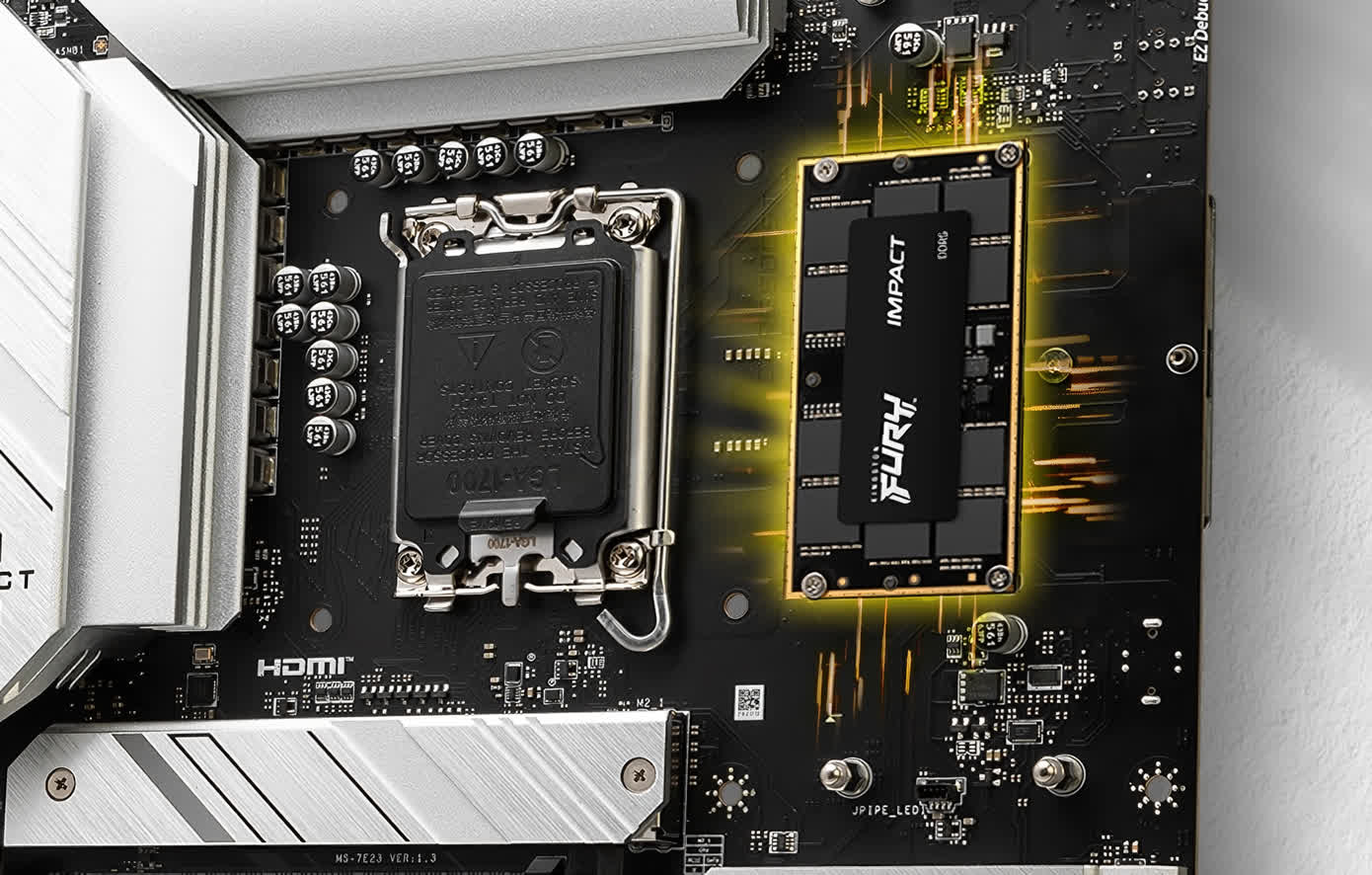Forward-looking: JEDEC, the trade organization and standardization body that oversees memory standards in the computer industry, published the CAMM2 memory standard in December 2023. The following month, Micron became the first to announce modules based on the new standard and in April, teamed up with Lenovo on the first laptop to support LPCAMM2 memory. The new spec is generally thought of as a laptop-specific technology, but MSI is here to prove that is simply not true.

The Taiwanese tech firm has partnered with Kingston on what is believed to be the world's first Z790 desktop motherboard to support CAMM2 memory. A teaser shared on X highlights a board sporting a black PCB with silver accents. The usual DDR5 slots have been replaced with a single CAMM2 module – a Kingston Fury Impact DDR5 CAMM2 prototype, we are told.
MSI and @kingstontech are previewing the next revolution in memory design, the DDR5 CAMM2. Featured on a Z790 PROJECT ZERO PLUS, the Kingston FURY Impact DDR5 CAMM2 prototype module demonstrates the compact size, thin profile, and potential OC performance.#MSIxComputex2024 pic.twitter.com/vAhVB12zrI
– MSI Gaming (@msigaming) May 23, 2024
Dubbed the Z790 Project Zero Plus, the new desktop board is part of the company's Project Zero series, meaning it relocates most of the connectors to the back of the motherboard for better cable management. This, in turn, can lead to improved airflow and aesthetics, so long as your case is designed to support rear connections.
The post was tagged with a Computex 2024 hashtag, so it is safe to assume it'll be on display at the trade show next month in Taipei.
It will be interesting to see how this all plays out, and whether or not CAMM2 has a future in the desktop PC space. According to Tom's Hardware, the Kingston CAMM2 memory does not use LPDDR5X and is instead limited to JEDEC DDR5 speeds. Should it prove a hit with enthusiasts, perhaps an LPDDR5X version could eventually materialize.
One of the major benefits of the new standard in laptops is in space saving, as LPCAMM2 affords a space-saving advantage of 64 percent over traditional DDR5 SODIMMs. Real estate is not as big of a concern in desktops as it is in laptops, although SFF systems could likely benefit from the compact design.